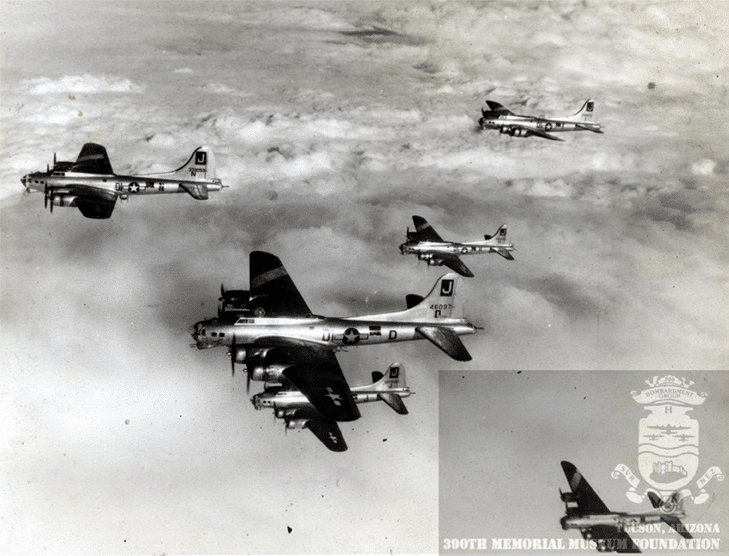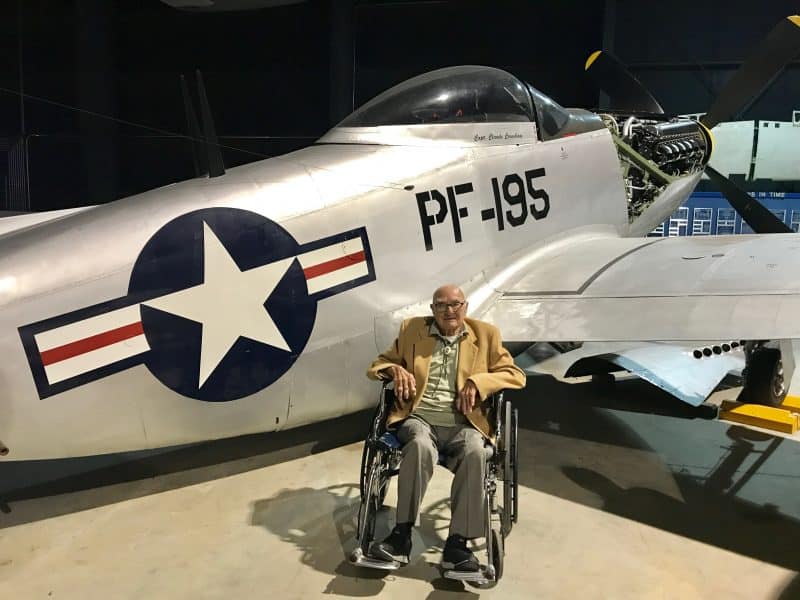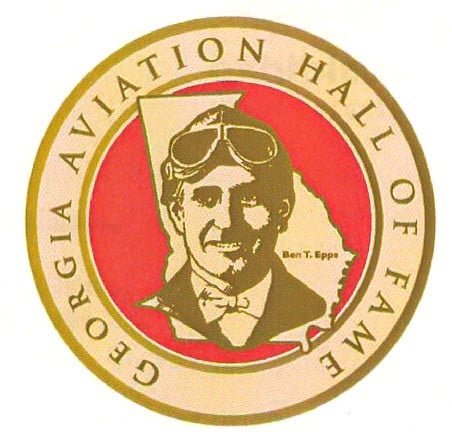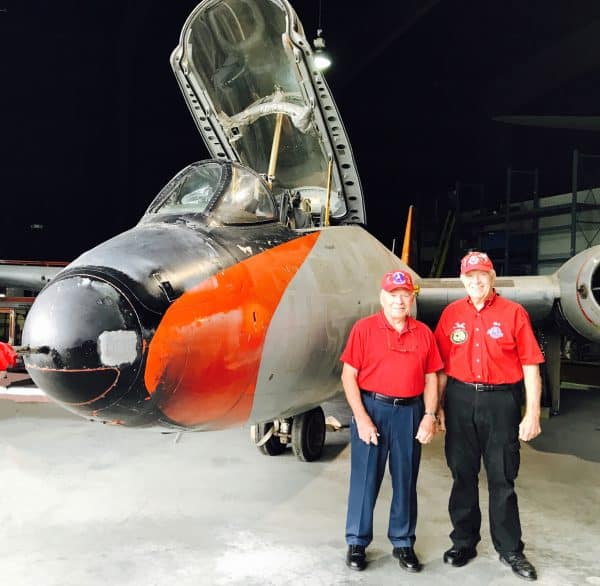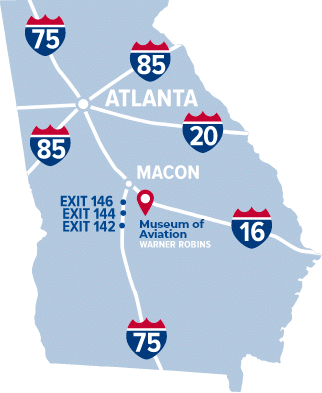By Elizabeth Skinner
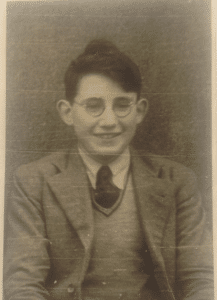
David Woolnough when he was 11 years old. (Source: Elizabeth Skinner)
My late father, David Woolnough, grew up in the county of Suffolk, England, on a farm. When Great Britain declared war on Germany in 1939 he was just seven years old and ten when the Americans arrived. The following is some history of the airfield and some of the childhood memories he had of growing up during the war with the arrival of the Americans and the B-17 Flying Fortress. Suffolk had seen nothing like it before!
My father’s uncles both had large farms in a village called Parham next to where Dad lived as a boy. A “Class A” airfield was built on their land. Rubble was imported from the bomb sites of London and Birmingham to create a hardcore base for the tons of concrete that were poured. Two huge hangars were erected, and in 1944 Glenn Miller and his band performed in one of them. The airfield was built in a very short time and Dad remembers many lorries going past his farm carrying materials.
When the airfield was completed in the summer of 1943 it was handed over to the United States Eighth Air Force. It was known as Framlingham Station 153.
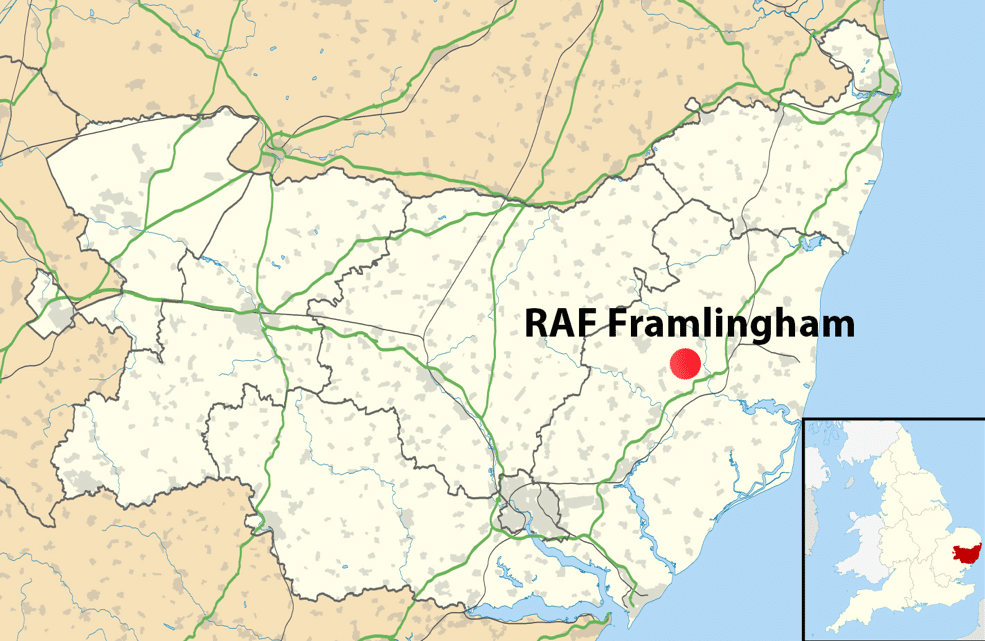
Map showing the location of RAF Framlingham within Suffolk. (Source: Wikipedia)
The first bombardment group stationed at Framlingham, the 95th, flew B-17 Flying Fortress bombers and suffered awful losses during daylight attacks. They were eventually transferred to Horam, also in Suffolk. In July 1943 they were replaced by the 390th Bombardment Group that also operated B-17s. The 390th flew from Parham for the remainder of the War in Europe. They flew over 300 missions, dropped 19,000 tons of bombs, and lost 181 aircraft. 714 airmen were lost.
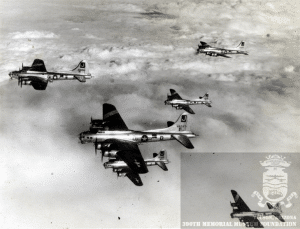
B-17s of the 390th Bomb Group. (Source: 390th Memorial Museum)
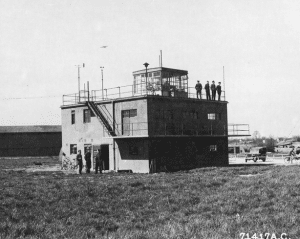
The 390th Bomb Group’s control tower at Framlingham, Suffolk, England (Station 153) on May 22, 1944. (Source: Wikipedia)
The Americans’ arrival to the village caused huge excitement for my Dad and his friends. Suddenly after years of rationing he was able to get gum and candy. He would tell me stories of how he used to stand by the airfield fence and hope that an airman would be nice enough to throw some over to him. When he needed to get to the nearby village they would have to get a special pass to go through the airfield. The base had been built around the road.
Some of his most vivid memories were of when the B-17s would leave for the raids on Germany. He would stand outside and count the bombers as they left, and then on their return would count to see how many made it back. On one occasion a returning battered bomber didn’t quite make it back and crashed into a nearby field. The crew bailed out but Dad never knew how many, if any, survived. He and his friends searched the wreckage for bits of shrapnel, glass and plane parts for souvenirs.
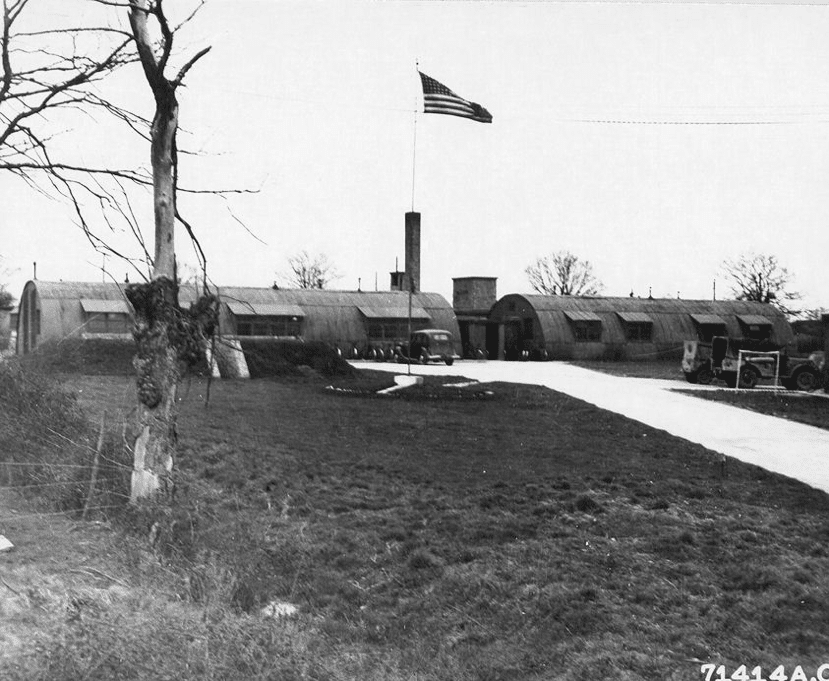
Headquarters buildings at Framlingham, Suffolk, England (Station 153) in March 1945. (Source: Wikipedia)
Following the war the airfield/land was returned to my father’s uncles. Most of the runway was pulled up but some still remains (in fact Dad would take us all for driving lessons on it) along with some of the original buildings.
The Parham Airfield Museum stands on the site today and pays tribute to these men. It’s well worth a visit if you are ever in England!
Elizabeth Skinner is an instructor at the Museum of Aviation Education Center.


